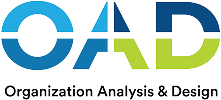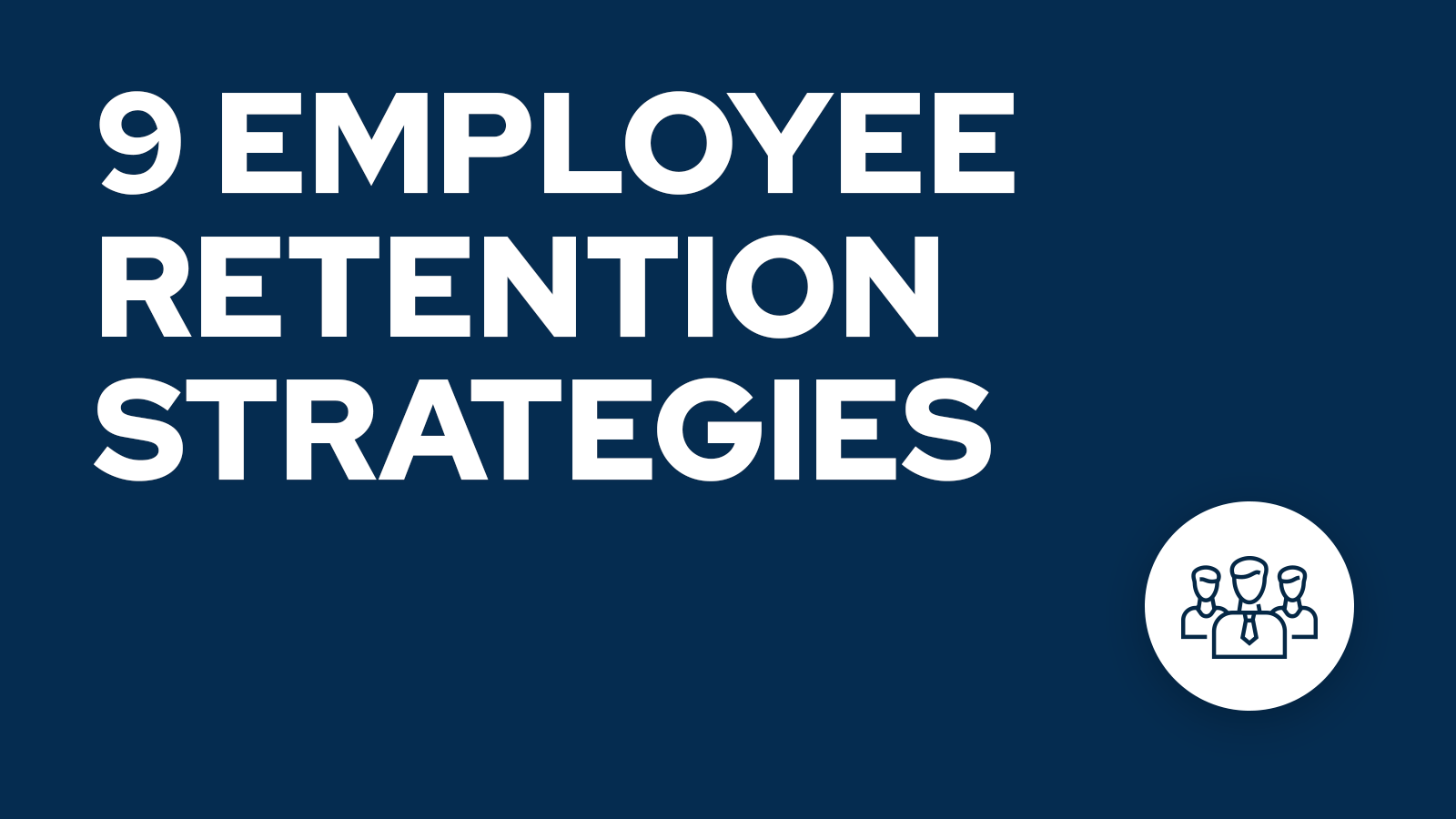High turnover isn’t just a hassle—it’s a risk to your company’s future. Discover 9 overlooked retention strategies that go beyond perks to actually keep your best people.
Table of Contents
- Why Employee Retention Strategies Matter More Than Ever
- Strategy #1: Build a Culture of Ownership
- Strategy #2: Create a Vision Employees Can Believe In
- Strategy #3: Recognize Real Wins—Early and Often
- Strategy #4: Make Flexibility a Standard, Not a Perk
- Strategy #5: Invest in Personalized Career Development
- Strategy #6: Strengthen Cross-Team Connection and Belonging
- Strategy #7: Use Feedback to Drive Real Change
- Strategy #8: Prioritize Mental Health and Well-Being
- Strategy #9: Live and Breathe Diversity and Inclusion
- Tech-Driven Retention: Leveraging Technology to Keep Your Best People
- Final Thoughts: Employee Retention Is a Culture—Not a Checklist
- Ready to Build a Team That Stays?
Why Employee Retention Strategies Matter More Than Ever
Hiring top talent is hard. Keeping it? Even harder. And yet, many organizations still treat employee retention as an afterthought—focusing more on hiring sprees than on creating an environment people won’t want to leave.
But turnover comes at a cost:
- Recruiting replacements is expensive.
- Productivity dips during onboarding.
- Morale suffers when experienced employees exit.
- And worst of all? High turnover sends a signal to remaining employees: Maybe it’s time to leave too.
Employee retention is important because it reduces turnover-related costs, maintains organizational stability, and improves overall company performance.
In fact, research shows that frequent turnover doesn’t just impact performance—it erodes culture. Every departing employee chips away at your institutional knowledge, slows team momentum, and creates uncertainty across the organization. In today’s competitive job market, this makes effective retention strategies even more critical for organizations striving to attract and retain top talent.
So why do employees leave?
It’s rarely just about compensation. Employees leave because they feel undervalued. Overlooked. Disconnected from leadership. Trapped in roles with no future. Many employees are affected by issues like underrecognition, burnout, and limited growth opportunities, making it essential to address these concerns to improve retention and engagement.
That’s where effective employee retention strategies come in. The right approach can:
- Boost employee engagement
- Increase job satisfaction
- Strengthen your employer brand
- Reduce the cost and chaos of backfilling roles
- And ultimately—help your business thrive
Recent survey data shows that more than a quarter of employees plan to leave their jobs in 2025, highlighting the urgent need for organizations to prioritize retention.

Bottom line? The best companies aren’t just finding great people—they’re keeping them. And that gives them a competitive edge money can’t buy.
Strategy #1: Build a Culture of Ownership

Micromanagement kills motivation. Yet in many organizations, employees still feel like task-doers instead of decision-makers. The result? Low engagement, stalled innovation, and rising turnover.
The solution? Give your people ownership. When employees are empowered to lead projects, solve real problems, and contribute ideas that influence outcomes, they stop working for the company and start investing in it.
Employees who feel trusted don’t just perform better—they stay longer. Why? Because ownership builds pride. It deepens commitment. And it fosters the kind of employee engagement that drives long-term business success. Fostering a positive company culture that values ownership and trust is essential for supporting long-term retention and employee satisfaction.
Try this:Launch monthly “Innovation Days” where employees pitch ideas, lead small initiatives, or solve internal challenges. Not only does this build a more agile organization—it shows employees their voices matter.
OAD Insight:When you understand each team member’s strengths and motivations, you can assign ownership more strategically. Tools like OAD help match projects to personalities, which boosts confidence and accelerates growth.
Strategy #2: Create a Vision Employees Can Believe In

People don’t stay loyal to companies. They stay loyal to purpose.And no—your quarterly revenue goals don’t count as purpose.
If employees don’t understand where your company is going—or why it matters—they’ll eventually start looking for more meaningful work elsewhere. Especially your high performers.
That’s why employee retention starts with storytelling.
A clear, inspiring vision gives your team something to rally around. When people see how their work contributes to a bigger mission, job satisfaction and engagement skyrocket. Even routine tasks feel more meaningful when they’re part of a larger narrative.
Regularly gauging employee sentiment through surveys or real-time feedback tools helps ensure your company vision truly resonates with your team and supports long-term retention.
Try this:Hold quarterly “Vision Sessions” where leadership shares progress, company goals, and future plans—while inviting employees to share their own aspirations, too. It’s not a lecture—it’s a conversation.
OAD Insight:Using behavioral data, you can tailor how vision is communicated to resonate with different personality types. Some employees respond to big-picture inspiration, while others need clear, measurable goals. OAD helps you speak their language.
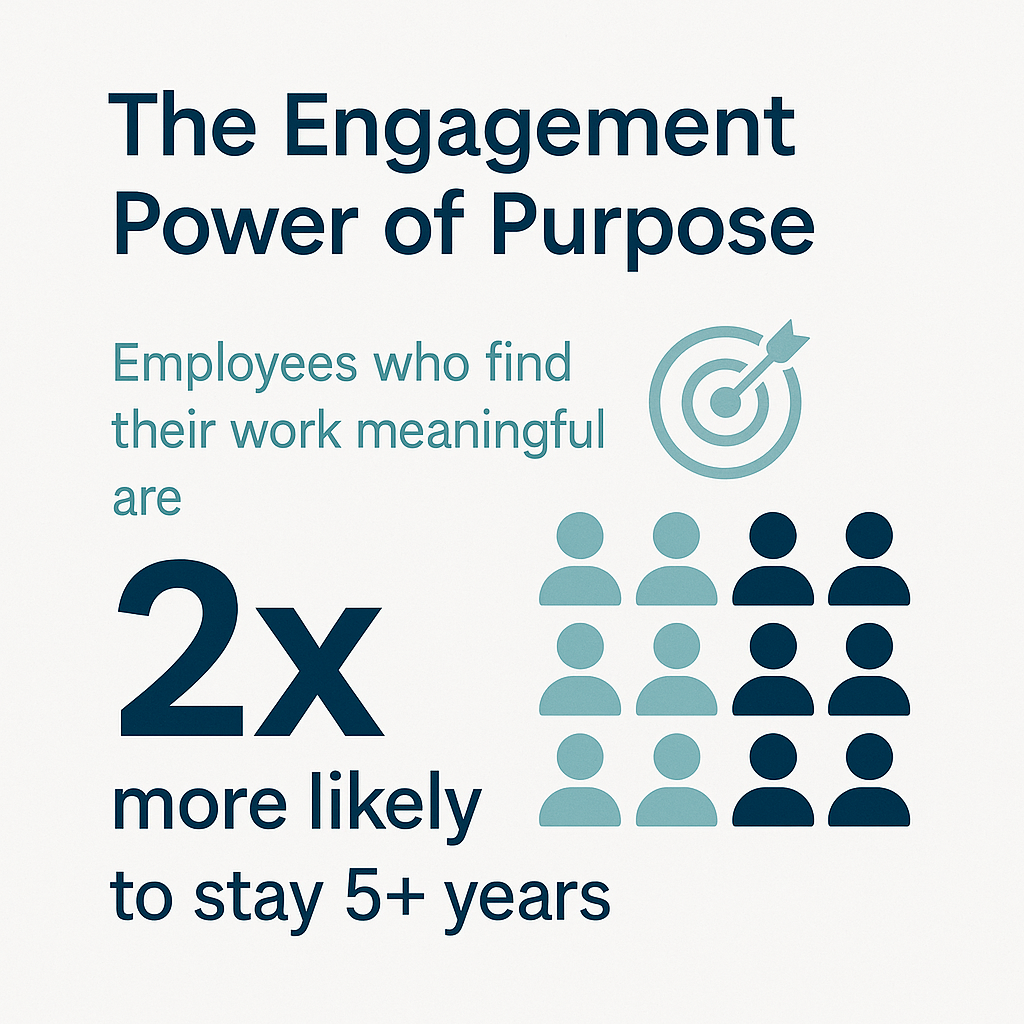
Strategy #3: Recognize Real Wins—Early and Often

Annual performance reviews? Great. But if that’s the only time your employees feel seen, you’re missing a massive opportunity.
Recognition isn’t just a feel-good gesture—it’s a retention strategy. Employee recognition programs, whether formal or informal, play a crucial role in boosting engagement and fostering a positive organizational culture. When people are acknowledged consistently for their progress, creativity, and impact, they’re more likely to stay committed and motivated.
And here’s the secret: You don’t have to wait for big milestones.The best companies celebrate the small wins too—those moments when someone goes the extra mile, solves a tricky problem, or uplifts a teammate. Both social recognition and monetary rewards can significantly boost employee motivation and retention.
Because when you make recognition a habit, you build a culture where employees feel valued, visible, and proud of their contributions. Regular acknowledgment from leadership improves employee morale and helps reduce turnover.
Try this:Set up a team-wide “Recognition Wall” (digital or physical) where anyone can give a shoutout. Or dedicate 5 minutes at the start of every team meeting for peer-to-peer appreciation.
OAD Insight:Recognition lands differently for different personalities. Some prefer public praise, others value a private thank-you. With tools like OAD, you can tailor recognition styles to individual preferences—making each moment of praise more meaningful.

Strategy #4: Make Flexibility a Standard, Not a Perk
The workplace has changed—and expectations have changed with it. Today’s employees don’t just want flexibility—they expect it. And the organizations that offer it aren’t just boosting morale… they’re slashing turnover.
Gone are the days of rigid 9-to-5 schedules and one-size-fits-all policies. High-performing employees thrive when they’re trusted to manage their time and environment. That means flexibility in when, where, and how they work. Organizations can promote work life balance by implementing policies such as flexible hours and remote work, allowing employees to choose work times that suit their needs. Offering flexible hours helps prevent burnout and supports employee well-being.
Let’s break it down:
Embracing Remote and Hybrid Work Models

Remote work is more than a trend—it’s a competitive advantage.Companies that offer remote or hybrid options see higher employee retention, better employee satisfaction, and improved employee productivity.
Even roles that require employees to work on site can often include flexible elements like adjusted hours or work-from-home days.
Tip: Offer role-specific flexibility tiers—some teams may work better fully remote, others hybrid. Ask employees what setup works best for their responsibilities and well-being.
Prioritizing a Healthy Work-Life Balance
Burnout is one of the top reasons employees quit.That’s why promoting work-life balance isn’t just about giving people time off—it’s about respecting their time while they’re on the clock.
Encourage mental breaks. Avoid glorifying overwork. Model healthy boundaries from the top down. Human resources professionals play a key role in promoting work-life balance by implementing supportive policies and strategies that help prevent burnout and improve employee well-being.
Autonomy Over Hours: Measure Outcomes, Not Time
Stop tracking time. Start tracking impact.
Employees want to be trusted. That means measuring success by results—not hours logged. When people know they’re being evaluated on what they deliver (not when they deliver it), they feel respected—and stay longer.
OAD Insight:
Not everyone works the same way. Behavioral insights from OAD can help you identify which employees thrive under autonomy and which may need more structure—so you can offer flexibility that fits.

Strategy #5: Invest in Personalized Career Development
If employees feel like their growth has stalled, they’ll start looking for the next opportunity elsewhere—even if they like their current job. That’s why companies committed to retaining top talent don’t just offer training—they offer personalized career development that aligns with both individual goals and business needs. Providing professional development opportunities is essential for supporting retention, as it addresses employees’ desire for growth and advancement. These initiatives also enhance employees’ sense of personal investment in the company, making them more likely to stay and contribute. Business leaders play a key role in fostering professional development and supporting employee growth by making strategic decisions and collaborating with HR teams.
When employees see a clear path forward—and feel supported in getting there—they’re more likely to stay, contribute, and grow with your company.
Let’s break this into three essential layers:
Offer Tailored Professional Growth Plans
Forget one-size-fits-all training. Every employee has different skills, ambitions, and learning styles.
Career development programs should reflect that. Work with employees to create personalized learning paths that match their roles, strengths, and aspirations. Aligning growth opportunities with employees’ interests helps boost job satisfaction and retention.
Tip: Schedule quarterly growth check-ins to revisit development plans. Ask: “Where do you want to grow next?” and “What support do you need from us?”
Support Tuition Reimbursement and Certifications
Investing in education sends a powerful message: We believe in your future.
Whether it’s tuition reimbursement, skill certifications, or industry workshops—offering tangible growth opportunities shows long-term commitment.
And it pays off. Employees who feel their employer supports their professional development are significantly more likely to stay.

Promote from Within: Prioritize Internal Mobility
When internal candidates get passed over for promotions, they don’t just feel disappointed—they start preparing their exit.
Internal mobility is one of the strongest drivers of retention.
It boosts morale, protects institutional knowledge, and motivates employees to keep growing—because they know it’s worth it.
OAD Insight:
Using OAD assessments, HR teams can spot hidden strengths in existing employees and create targeted development paths for promotion-readiness.

Strategy #6: Strengthen Cross-Team Connection and Belonging
People don’t just stay for paychecks—they stay for people.In fact, one of the most underrated employee retention strategies is fostering a culture of real human connection. Because when employees feel like they belong—not just in their role, but in the broader organization—they’re more likely to stay loyal, even through challenges.
But belonging doesn’t happen by accident. It requires intentional action—especially across departments, roles, and levels of seniority. Fostering a sense of belonging is essential for enhancing employee engagement, trust, and retention. Building meaningful connections through coaching, recognition, and authentic interactions helps create stronger relationships between managers and employees.
Here’s how to build that connective tissue:
Create Meaningful Interactions Beyond Job Titles

Cross-department relationships build empathy, break silos, and make work feel more collaborative. These efforts help build employee engagement and support retention by increasing involvement and satisfaction. They also strengthen the emotional glue that keeps people around.
Try this:Host monthly cross-functional workshops where employees solve real business challenges together. Or pair teams for one-off “walk-a-mile” days to learn each other’s work.
Launch Mentorship and Buddy Programs
Mentorship isn’t just for onboarding. Ongoing buddy systems and cross-level mentoring help employees feel seen, supported, and guided—especially in larger companies.
Bonus: these relationships accelerate employee engagement, professional growth, and internal trust.
Build Traditions That Foster Community
From “wins of the week” shoutouts to Friday learning lunches or quarterly offsites—rituals matter. The more employees feel like part of a shared experience, the more they feel like they belong.
OAD Insight:
Understanding team dynamics through OAD helps leaders build more inclusive, psychologically safe environments—where all types of personalities feel connected and engaged.
Strategy #7: Use Feedback to Drive Real Change
If your employees are sharing feedback—and nothing happens as a result—you’re not improving culture. You’re eroding trust. Providing continuous feedback is essential to enhance employee performance, increase job satisfaction, and promote retention.
Collecting feedback without action is one of the fastest ways to lose top talent. It tells employees their voices don’t matter. And when that belief sets in, disengagement follows close behind.
But when feedback drives visible change? Retention improves. Morale lifts. And employees stay loyal. Findings from the same survey show that emotional and flexibility-related incentives play a significant role in keeping employees engaged and reducing turnover.
Here’s how to turn your feedback loop into a retention tool—not just a suggestion box: Understanding employee job satisfaction through regular feedback is key to building effective retention strategies.
Make Feedback Continuous, Not Seasonal
Waiting for annual engagement surveys? That’s too late.
Instead, create short, recurring check-ins—monthly pulse surveys, manager one-on-ones, and anonymous suggestion forms. These tools help managers connect with their direct reports and track engagement over time. The goal is to create an ongoing dialogue, not a one-time evaluation.
Close the Loop: Show What’s Changing
Gathering insights is only half the job. The real retention magic happens when employees see change based on their input.
Post a “You spoke, we acted” update quarterly. Share what you heard and what you’re doing about it—even if the change is small.
Empower Managers to Listen Better

Your frontline leaders have the most impact on employee engagement—and they’re often the first to hear pain points.
Train managers to actively listen, ask clarifying questions, and escalate feedback that matters. One small fix at the team level can prevent a high-performer from walking out the door.
OAD Insight:
With behavioral data from OAD, you can coach managers on how to adjust their communication and listening styles to better connect with different team members—making every feedback conversation more effective.
Strategy #8: Prioritize Mental Health and Well-Being
You can offer the best perks, the highest salary, and the flashiest office… But if your people are burned out, anxious, or overwhelmed? They won’t stay.
In today’s workplace, mental health is a business priority—not a personal problem.And companies that recognize this aren’t just retaining more employees—they’re building more resilient, high-performing teams. Prioritizing well-being also helps keep talent engaged and committed for the long term.
It’s time to go beyond surface-level wellness. Here’s how to build a culture that actually supports employee well-being:
Move Past the Basics: Offer Real Support
An employee assistance program (EAP) is a good start—but it’s not enough.
Forward-thinking companies now offer wellness stipends, therapy reimbursements, meditation app subscriptions, and regular access to mental health professionals.
Tip:
Include mental health as part of your benefits onboarding. Normalize it from day one.
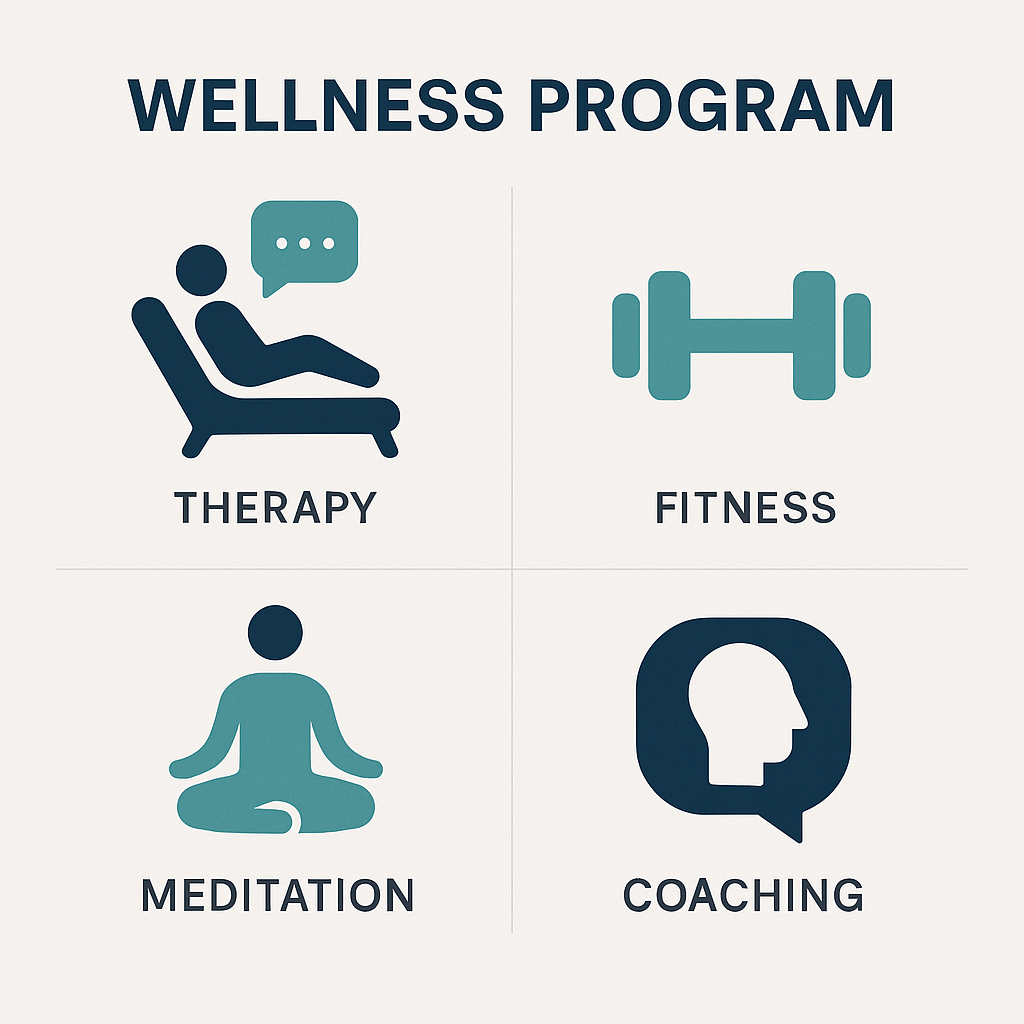
Build a Culture Where It’s Okay Not to Be Okay
Most people won’t speak up unless the culture says: It’s safe to do so.
Leaders must model vulnerability. Managers must check in beyond just performance. And HR must ensure employees know how to get help without stigma.
Support Recharge—Not Just PTO

Vacation days are important. But recovery needs to be woven into the day-to-day.
Offer mindfulness breaks. Encourage walking meetings. Build quiet spaces into your office layout. When employees are recharged, employee engagement and productivity increase—naturally.
OAD Insight:
Some employees are naturally wired to push through stress—others shut down. OAD data helps managers spot signs of burnout early, and tailor support before it turns into turnover.
Strategy #9: Live and Breathe Diversity and Inclusion
Diversity isn’t a hiring trend—it’s a retention multiplier. When employees feel like they belong, they stay.
But here’s the problem: Too many companies talk about diversity in HR statements… but fail to embed it into culture, leadership, and daily operations. HR leaders play a crucial role in overseeing and implementing effective diversity and inclusion strategies, ensuring these values are reflected in every aspect of the organization.
Today’s top talent is watching. And if they don’t see real action—on equity, representation, and inclusion—they’ll look for workplaces that walk the talk.
Here’s how to transform D&I from a policy into a cultural advantage:
Go Beyond the Metrics—Focus on Experience
It’s not just about how diverse your team looks.
It’s about how safe, supported, and valued each person feels.
Are different voices heard in meetings? Are promotions equitable? Are ERGs (Employee Resource Groups) supported and well-funded?
Tip:
Conduct regular inclusion audits—not just demographic reviews. Ask employees how inclusive their experience actually feels.
Educate and Empower Your Leaders

Inclusion must be modeled from the top.
Train managers to spot bias, hold space for difficult conversations, and celebrate diverse contributions across teams.
This creates a ripple effect that builds long-term loyalty across your entire workforce.
Tie Inclusion to Growth and Retention
Companies with inclusive cultures aren’t just nicer places to work—they’re more successful.
They retain talent longer. Innovate faster. Perform better. Without an inclusive environment, companies risk losing top talent, which can negatively impact performance and growth. And they send a message that employees of all backgrounds are seen, heard, and valued.
OAD Insight:Personality assessments like OAD help teams understand how diverse working styles can complement—not clash—when properly understood. This boosts collaboration and psychological safety across the board.
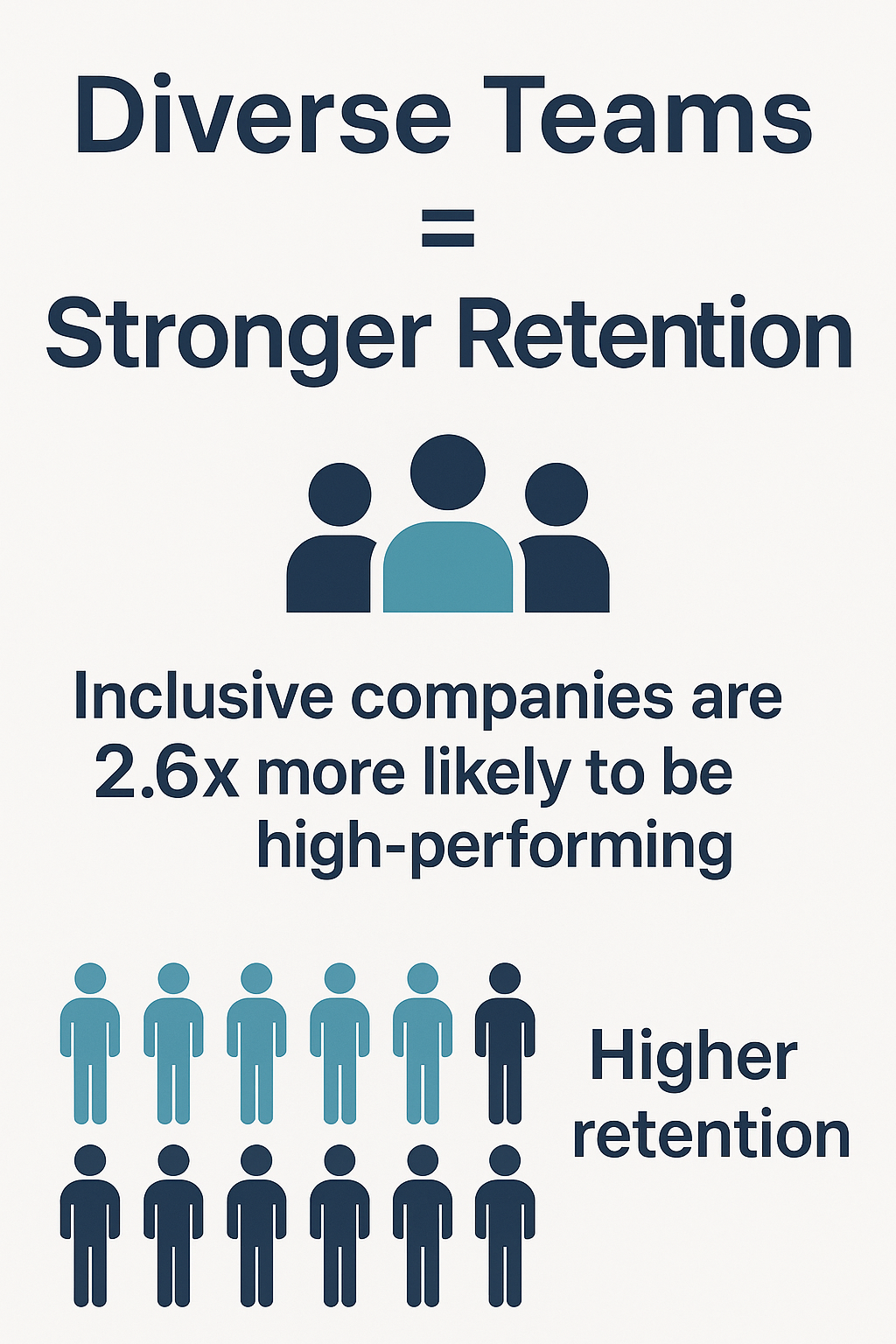
Tech-Driven Retention: Leveraging Technology to Keep Your Best People
In today’s fast-paced workplace, technology is a game-changer for employee retention efforts. The right tools can help you streamline processes, personalize the employee experience, and make smarter, data-driven decisions that keep your top performers engaged and loyal.
Using People Analytics to Spot Retention Risks
People analytics is transforming how organizations approach employee retention. By harnessing data on employee behavior, sentiment, and performance, you can spot potential retention risks before they become costly departures. For example, analytics might reveal that employees are leaving due to inadequate salary, limited career development, or a lack of healthy work life balance.
With these insights, you can take proactive steps to address the root causes. Offer fair compensation to ensure employees feel valued and paid fairly. Invest in career development opportunities—like training, mentorship programs, or tuition reimbursement—to support professional growth and career advancement. And don’t overlook the importance of promoting a healthy work life balance, whether through flexible schedules, remote work options, or wellness programs.
By leveraging technology and people analytics, you can develop targeted retention strategies that meet the unique needs of your workforce. This not only helps reduce turnover, but also boosts employee retention, engagement, and satisfaction—ensuring your best people stay and thrive.
Key Metrics Every Leader Should Know
To build a truly effective employee retention strategy, you need more than good intentions—you need data.
Here are the three metrics every HR leader and manager should track to understand where your retention efforts stand—and where to focus next:
Employee Retention Rate
This is your foundation. It shows the percentage of employees who stay over a defined period.
A high retention rate signals that your strategy is working. A low rate? That’s your early warning sign to dig deeper and act fast.
Employee Satisfaction
This measures how content employees are with their roles, managers, and overall experience.
Consistent surveys can reveal what’s fueling satisfaction—or what’s eroding it. And the sooner you identify pain points, the sooner you can address them.
Employee Engagement
Engagement tells you how emotionally invested employees are in their work and your mission.
Engaged employees don’t just stay—they lead, contribute, and elevate the teams around them. If engagement drops, retention risk rises.
Tracking these metrics regularly gives you more than insights—it gives you leverage.
You can spot patterns early, course-correct faster, and build employee retention strategies that respond to real needs—not assumptions.
Pro Tip:
Use a mix of quantitative data (like turnover rates) and qualitative feedback (like open-ended survey responses) to get the full picture.
Turning Data into Actionable Insights
Data alone doesn’t drive retention—decisions do.
Collecting metrics is just the beginning. To truly improve retention, you need to translate those numbers into insights—and then into action.
Look for patterns in your data.
- Is turnover higher in certain departments?
- Are new hires satisfied for six months, then disengaging?
- Are exit interviews pointing to the same issues again and again?
These trends reveal where your retention strategy is succeeding—and where it’s falling short.
Once you know the “why,” you can respond with precision.
If your data shows employees are leaving due to limited growth opportunities, for example, you might:
- Expand your career development programs
- Offer tuition reimbursement for continued learning
- Launch structured mentorship programs to guide advancement
When your actions reflect what employees actually want—whether that’s professional growth, recognition, or clearer internal pathways—you don’t just react to turnover.
You prevent it.
OAD Insight:
Behavioral data helps you go even deeper. It shows what different personalities value in growth, so you can personalize development plans and retain employees more effectively.
Benchmarking Against Industry Standards
Retention doesn’t happen in a vacuum.
To understand whether your efforts are truly effective, you need to look beyond your own organization—and compare against the wider market.
How does your employee retention rate stack up against others in your industry?
Are your engagement scores higher or lower than the average for similar roles or company sizes?
Benchmarking gives you critical context.
It shows you where you’re outperforming—and where you’re falling behind.
This external lens helps you:
- Validate what’s working
- Spot competitive gaps
- Prioritize improvements that truly matter
Because in a competitive job market, retaining top talent often comes down to one thing:
Are you offering a better employee experience than the next opportunity?
Pro Tip:
Revisit your benchmarks annually. Industries evolve, and so do employee expectations. Staying updated helps you refine your retention strategies, stay competitive, and continuously reduce turnover.
OAD Insight:
Combine benchmarking with behavioral data to set realistic, people-first goals—so your improvements reflect not just market trends, but your unique team.
Final Thoughts: Employee Retention Is a Culture—Not a Checklist
You can’t “perk” your way out of turnover.
Not with free snacks. Not with ping pong tables. Not with a bigger year-end bonus.
If you want to retain top talent, you need something deeper:
A culture that values people as much as performance. A workplace where employees feel seen, heard, and supported. A long-term investment in growth—not just output.
The strategies you just explored aren’t silver bullets. But together, they form the foundation of a workplace people don’t want to leave. A culture where talent isn’t just attracted—but inspired to stay.
And here’s the good news: You don’t have to figure it all out on your own.
Retention Starts with Knowing Your People
The most effective employee retention strategies begin with understanding who your employees are—how they work, what motivates them, where they struggle, and what makes them thrive.
That’s exactly what OAD helps you uncover.
With OAD’s scientifically backed assessments, you can:
- Identify strengths and potential burnout risks
- Align career paths with employee motivations
- Coach managers based on behavioral insight
- Build teams that collaborate, perform—and stay
Ready to Build a Team That Stays?
Top-performing employees aren’t leaving for better salaries—
They’re leaving for better environments.
Let’s help you create one.
